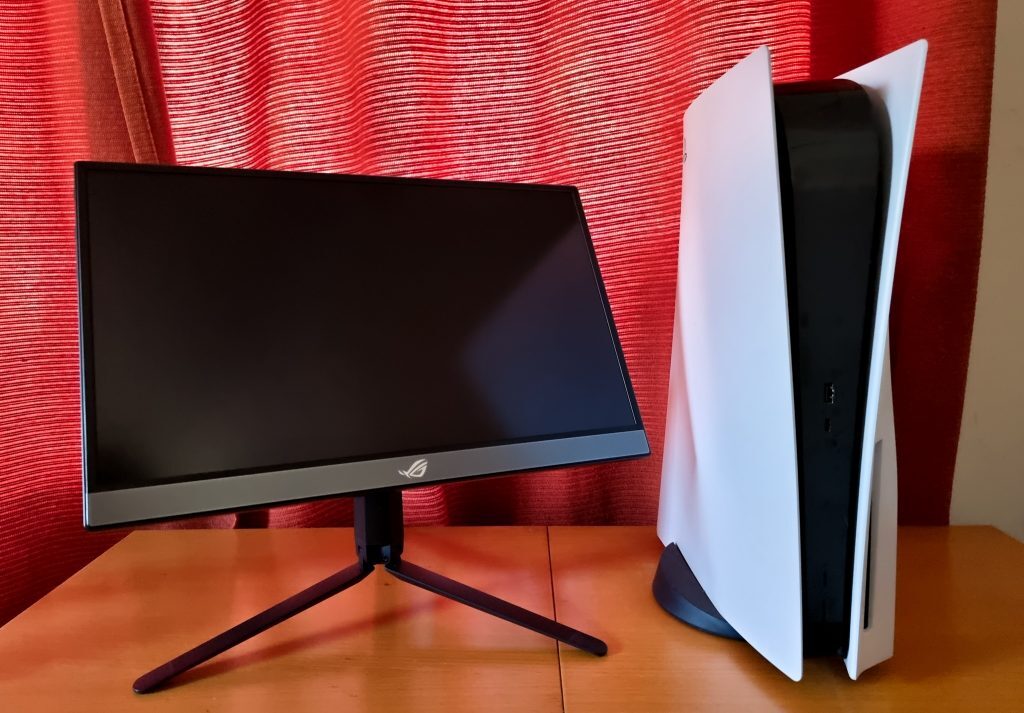Overall, the XG17AHP is fitted with all the latest and greatest tech you need in a dainty monitor like this. Couple the small frame with the ingenious ergonomic tripod stand and excellent quality, and you’ve got yourself a brilliant addition to the gaming setup.
-
Brightness
Sometimes we get a piece of tech that seems frivolous, and then it turns out to be the most useful gadget we’ve ever used. That’s exactly what happened when we tested the Asus ROG Strix XG17 portable monitor. You read that right — a monitor you can take with you. Why? Because you can, of course.
The surprisingly light 17.3in 1080p IPS panel, we found, is not only ideal for gaming with a 240Hz refresh rate, but it’s a brilliant back-up monitor when a power failure hits. It’s fitted with a massive 7,800mAh battery pack, so it doesn’t need to stay tethered to a wall socket — which opens up a myriad of possibilities if you’re creative enough (more on this later).
It offers some excellent image quality with a pixel density of 127.34 PPI — this gives you some phenomenal, crisp details and clarity. It’s capped at 1920x1080p resolution (FHD), though. But gamers don’t necessarily care for 4K as much as they do for a higher refresh rate. Something this little slab can put out on command.
War of the Worlds’ aliens need monitors too
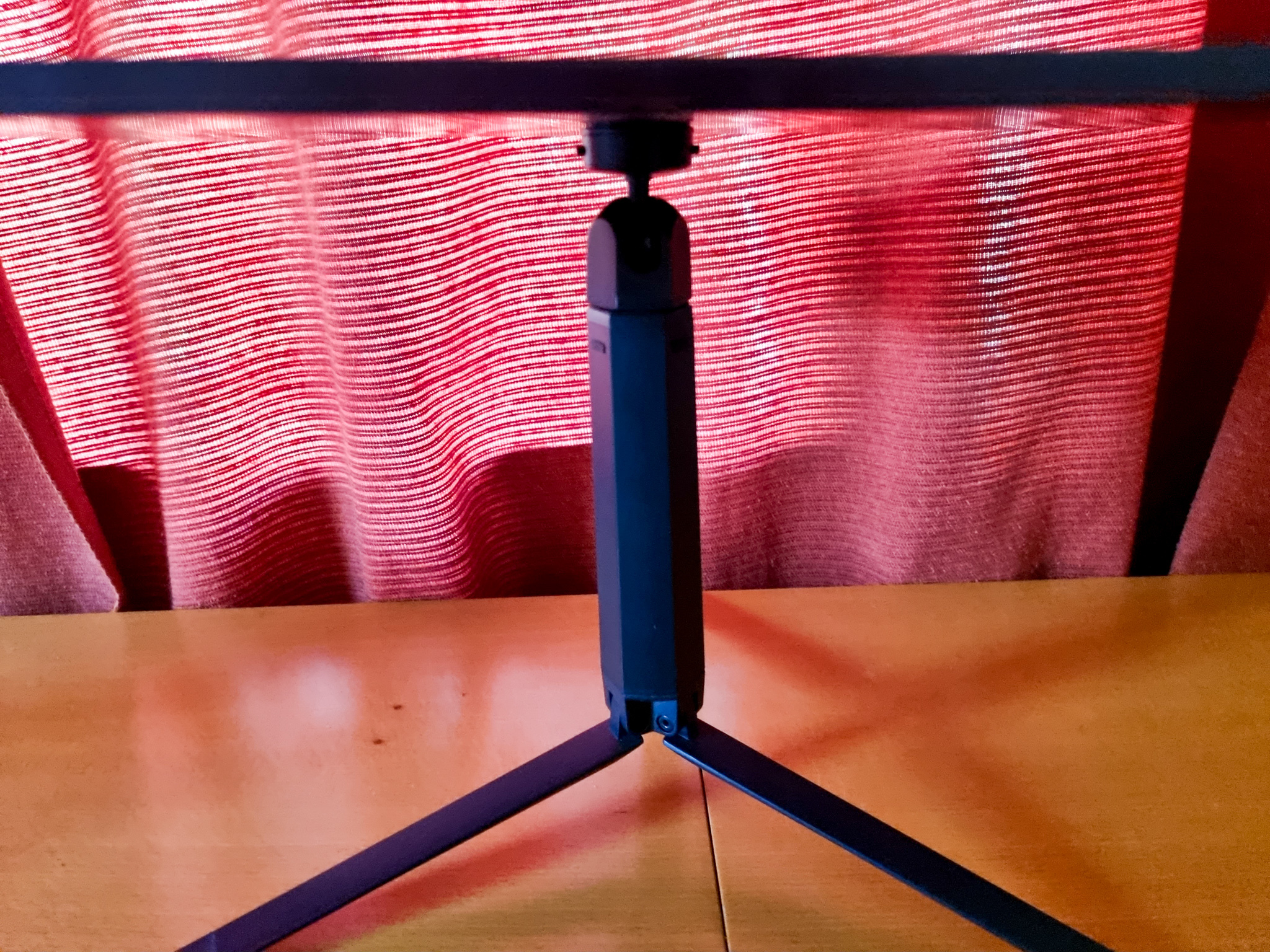 The more we work from home, the more we realise there isn’t actually that much space on our desks. Honestly, why does tech take up so much space? We like to think that’s why Asus developed the Strix XG17 with a tripod-shaped foot, attaching to a single point on the back of the panel. It sounds odd, and we weren’t convinced until we saw the vast amounts of space we could save.
The more we work from home, the more we realise there isn’t actually that much space on our desks. Honestly, why does tech take up so much space? We like to think that’s why Asus developed the Strix XG17 with a tripod-shaped foot, attaching to a single point on the back of the panel. It sounds odd, and we weren’t convinced until we saw the vast amounts of space we could save.
This is a travelling monitor (not like we’re travelling anywhere), so the point is that it should comfortably fit wherever you may want to place it. We reviewed the XG17AHP that comes equipped with a tripod stand and the Smart Cover, but you can opt for the cheaper XG17HPE which only includes the basic magnetic Smart Cover.
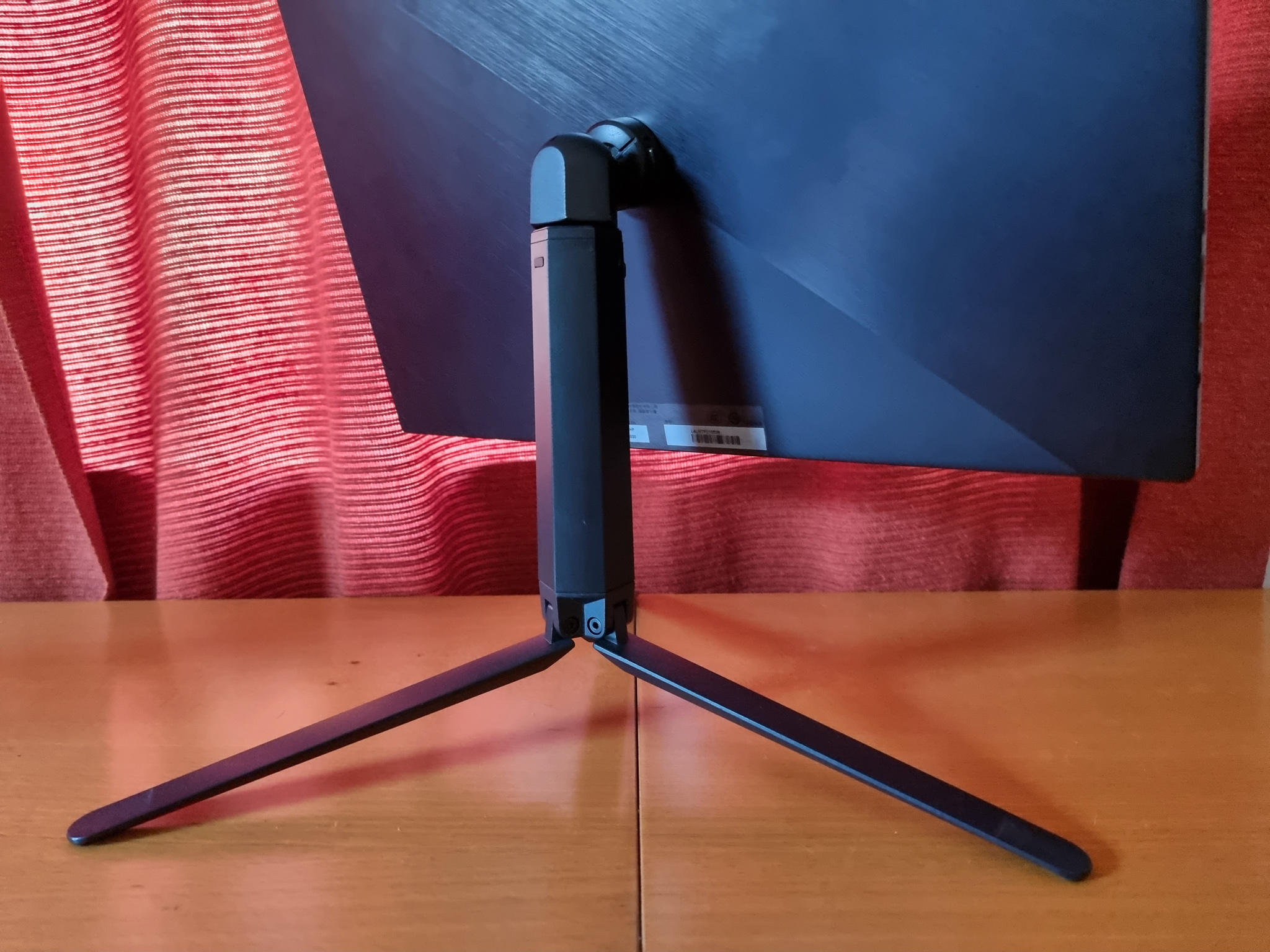
But this tripod is a mighty useful attachment, giving the display a wide range of movement including up to 115mm in height adjustment, a 90° tilt, and 360° swivel. You also get a carrying bag with the AHP model — a useful addition if we were going anywhere. The whole setup weighs just over 1kg and is 1cm slim so it is, in fact, very portable.
It’s also not a practical display if it doesn’t come with the necessary ports and connectivity choices — and it does. Connectivity options include a micro-HDMI port, a USB-C port (for connections and charging) and DisplayPort Alternate Mode. There’s another USB-C for charging only, a headphone jack and dual 1W built-in speakers.
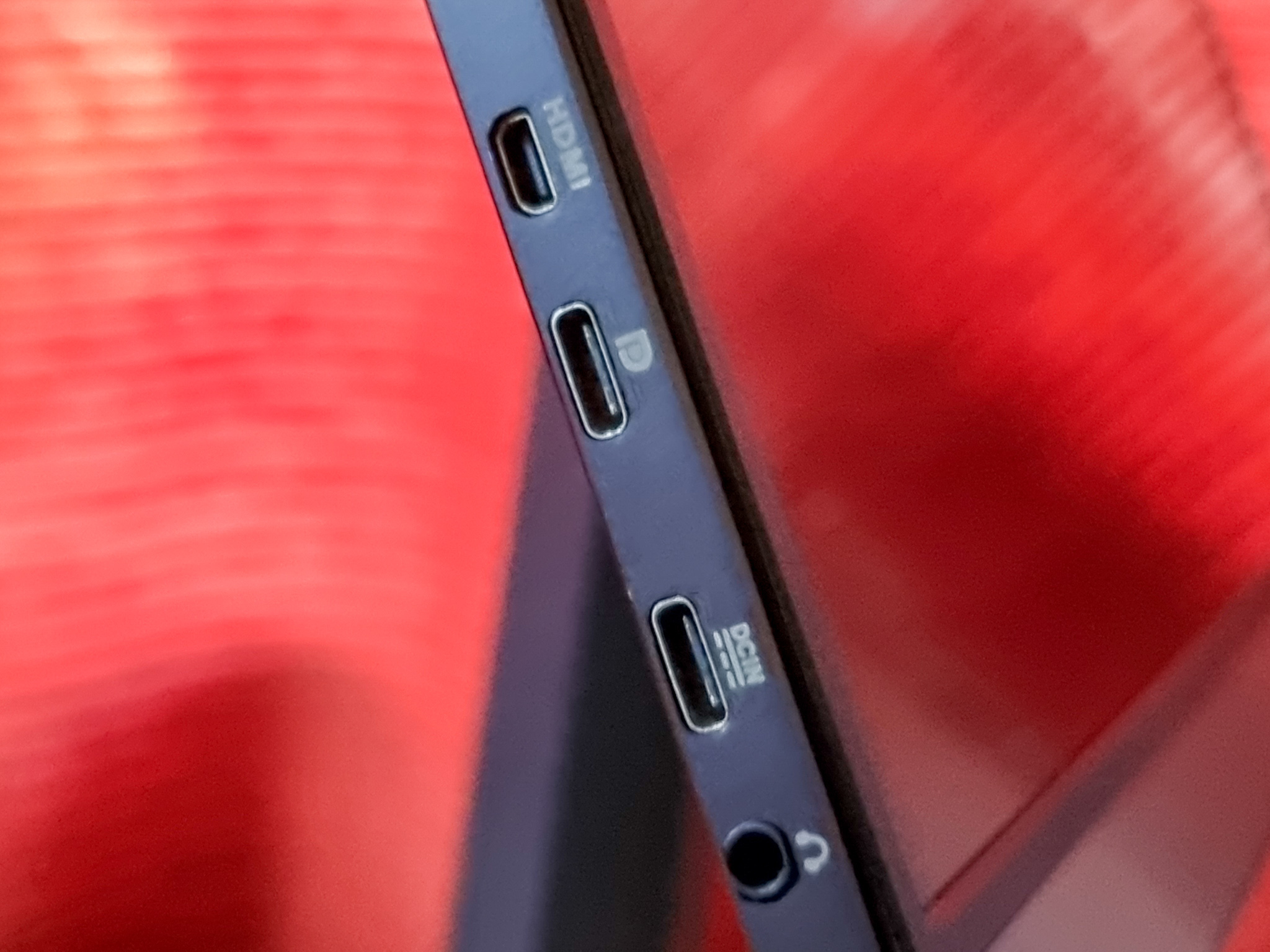 All the Hz you need
All the Hz you need
We need to keep reminding ourselves that this is a gaming monitor. And it’s extremely good t being one. Thanks to the rapid 240Hz refresh rate you’re in for some buttery-smooth gameplay, no matter what you throw at it.
Even more on-brand, the XG17AHP monitor features a 3ms response time — that’s low enough to truly keep up with that high refresh rate and give you both a responsive and smooth gameplay experience. We experienced this first-hand, running through multiple Apex Legends games as well as a few PS5 titles like Spider-Man: Miles Morales (which is capped at 120Hz, but still sleek).
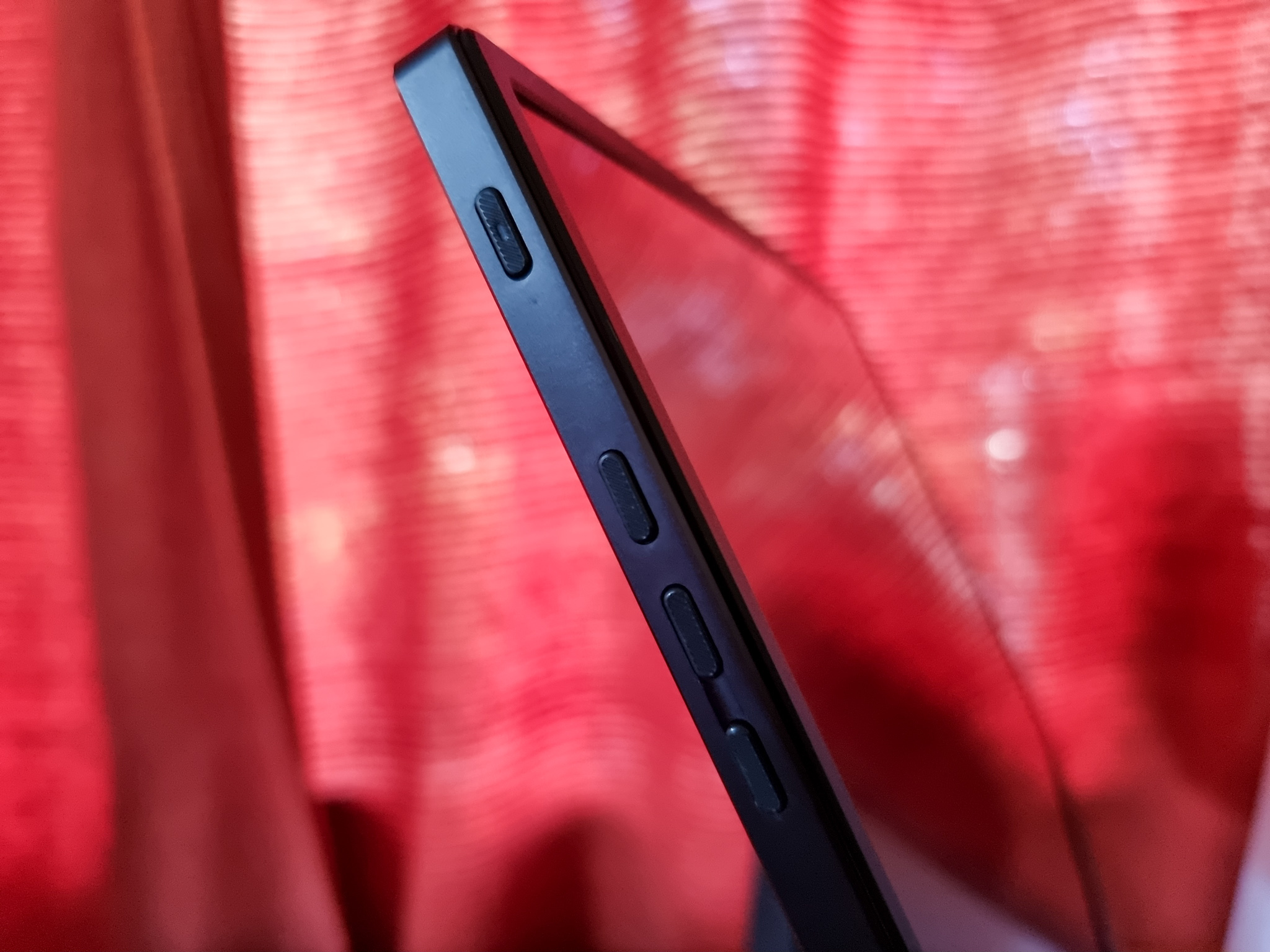 And some fancy stuff
And some fancy stuff
Obviously, that’s not all you get. If you’ve ever used an Asus monitor, you should be acquainted with GamePlus, GameVisual, and Shadow Boost as a set of additional features.
Basically, GamePlus allows you to configure and place custom crosshairs and timers on the screen, while GameVisual gives you a few pre-calibrated picture presets to choose from. Shadow Boost is just there to increase visibility in darker games (TLOU2, anyone?). We did find the 300-nit brightness on the display too low for really bright-lit areas like in front of windows or direct sunlight. Especially with that matte surface.
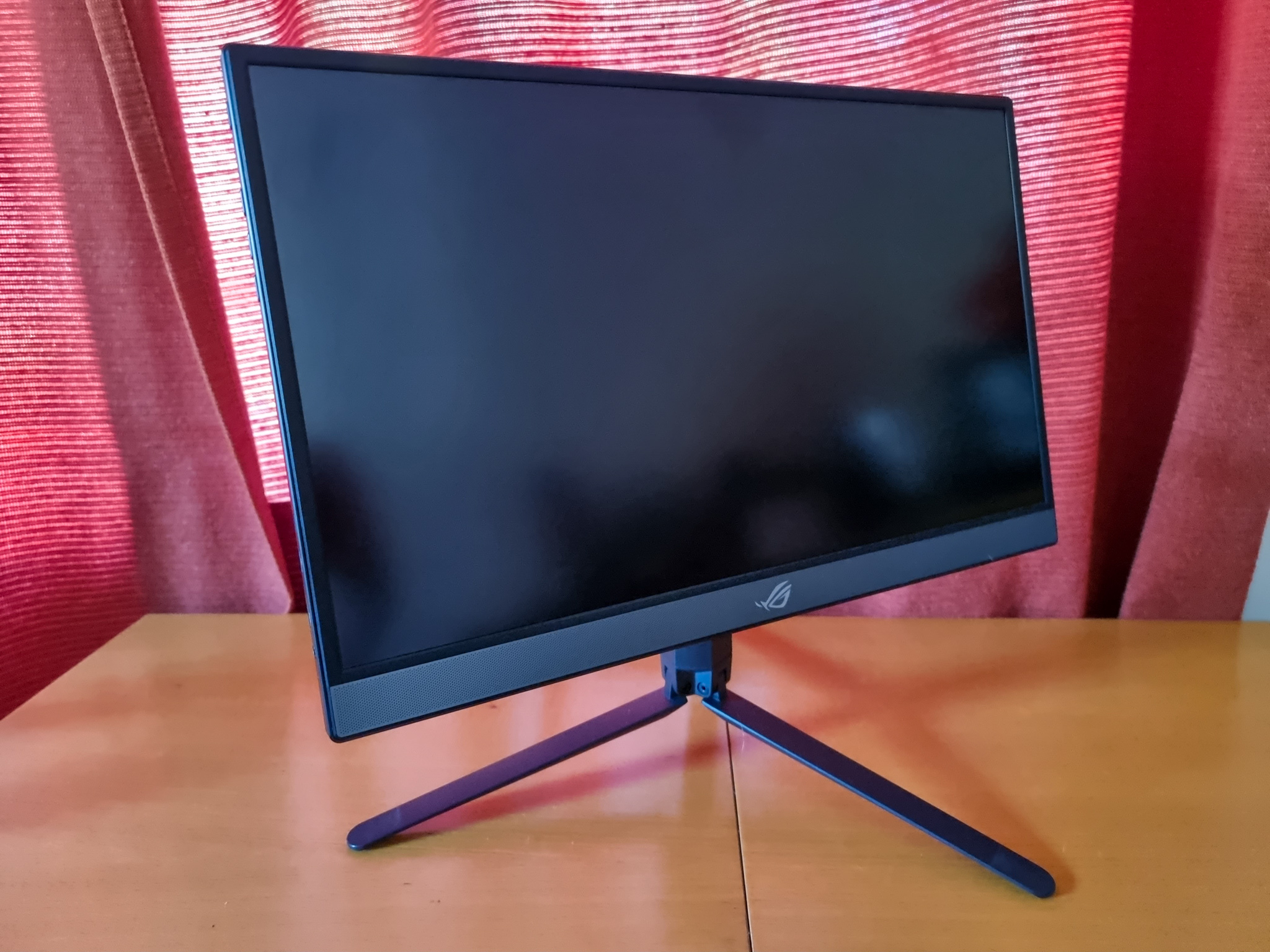 The display offers some added configuration options, like the ability to chose from six response time overdrive settings. These are called ‘OD’ and can be found in the OSD menu on the display itself. These are useful if you’re not interested in the full 240Hz mode, so you can easily crank it down to 144Hz. Turn to AMD FreeSync, and the monitor’s refresh rate will change according to your frame rate — this should eliminate screen tearing and stuttering.
The display offers some added configuration options, like the ability to chose from six response time overdrive settings. These are called ‘OD’ and can be found in the OSD menu on the display itself. These are useful if you’re not interested in the full 240Hz mode, so you can easily crank it down to 144Hz. Turn to AMD FreeSync, and the monitor’s refresh rate will change according to your frame rate — this should eliminate screen tearing and stuttering.
Perfect load shedding partner
This is one of those unexpected features, and it doesn’t even include a gaming PC or console, really. The XG17’s 7,800mAh battery will last a good 4 hours on a charge — you see where we’re going with this.
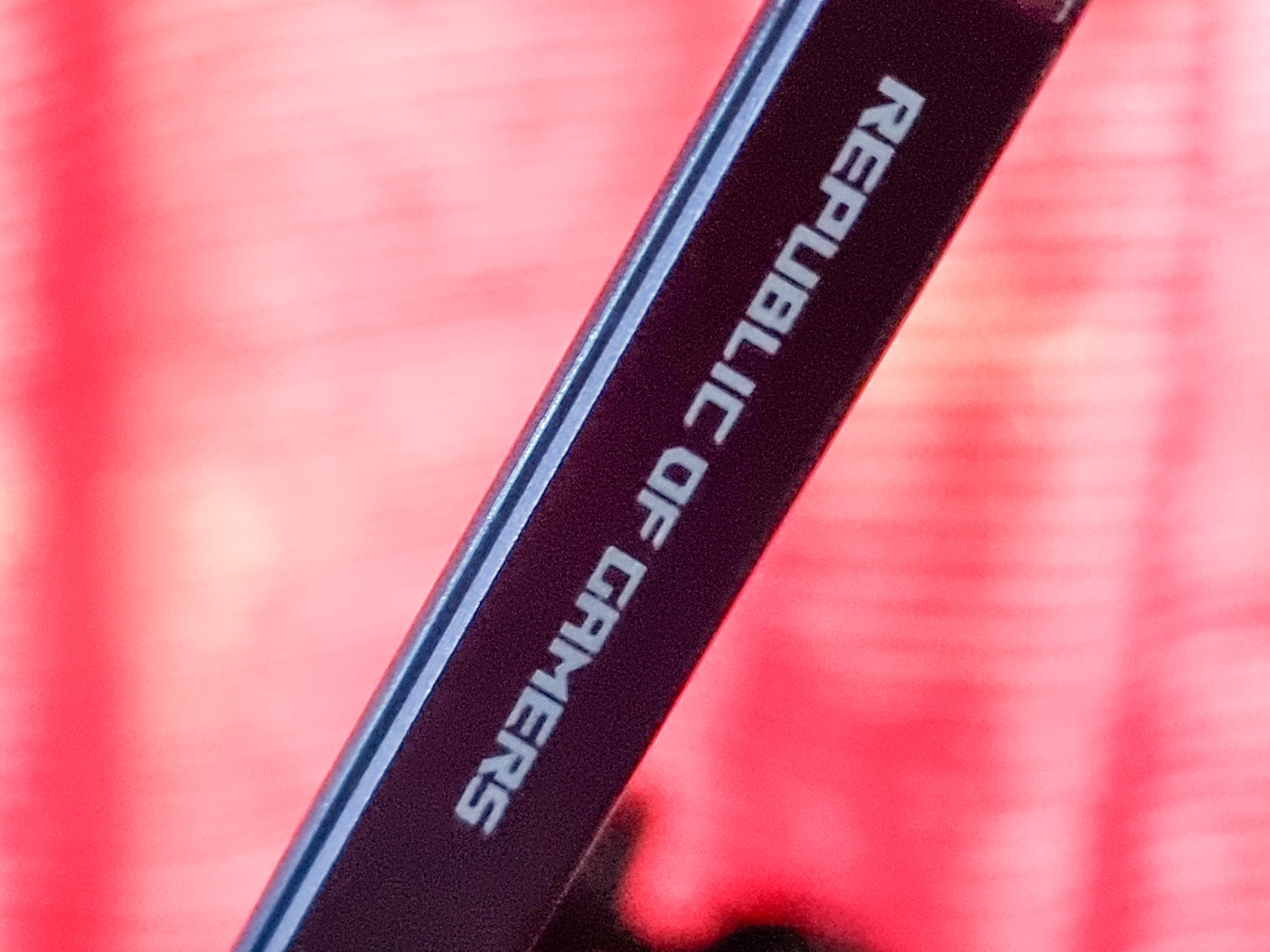 It’s easy enough to connect a smartphone via either USB-C or HDMI to the monitor, and as long as the smartphone’s battery is charged, the screen will turn into an emergency TV. We found this particular capability mighty useful during the four-hour load shedding slots in Johannesburg. Simply connect a smartphone (or a laptop, for that matter), and you’re set with a decently-sized mini-TV.
It’s easy enough to connect a smartphone via either USB-C or HDMI to the monitor, and as long as the smartphone’s battery is charged, the screen will turn into an emergency TV. We found this particular capability mighty useful during the four-hour load shedding slots in Johannesburg. Simply connect a smartphone (or a laptop, for that matter), and you’re set with a decently-sized mini-TV.
Let’s say the power’s not out, and the monitor’s part of your gaming setup — you’ll get a good 3 hours out of the display on max settings. Still decent.
Asus ROG Strix XG17AHP Verdict
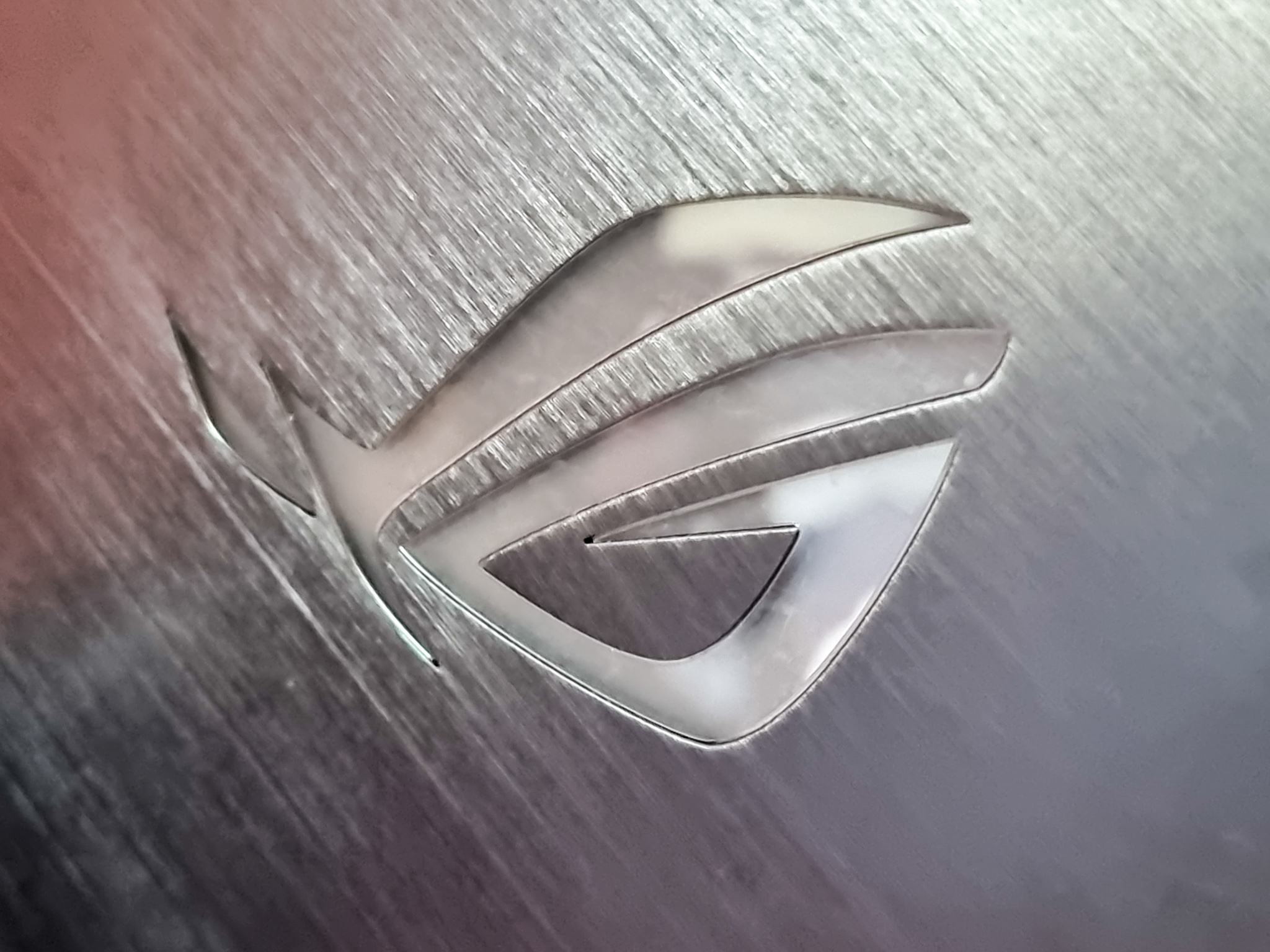 Overall, the XG17AHP is fitted with all the latest and greatest tech you need in a dainty monitor like this. Couple the small frame with the ingenious ergonomic tripod stand and excellent quality, and you’ve got yourself a brilliant addition to the gaming setup.
Overall, the XG17AHP is fitted with all the latest and greatest tech you need in a dainty monitor like this. Couple the small frame with the ingenious ergonomic tripod stand and excellent quality, and you’ve got yourself a brilliant addition to the gaming setup.
The only thing we’ll subtract a cool-point for is the fairly low 300-nits brightness on the display, which does make it harder to view in brighter scenarios. We’re still waiting on local availability and pricing, as these aren’t readily available in South Africa just yet.
We did, however, find a friend in a gadget that we really didn’t expect to. Plus 10 cool-points.

